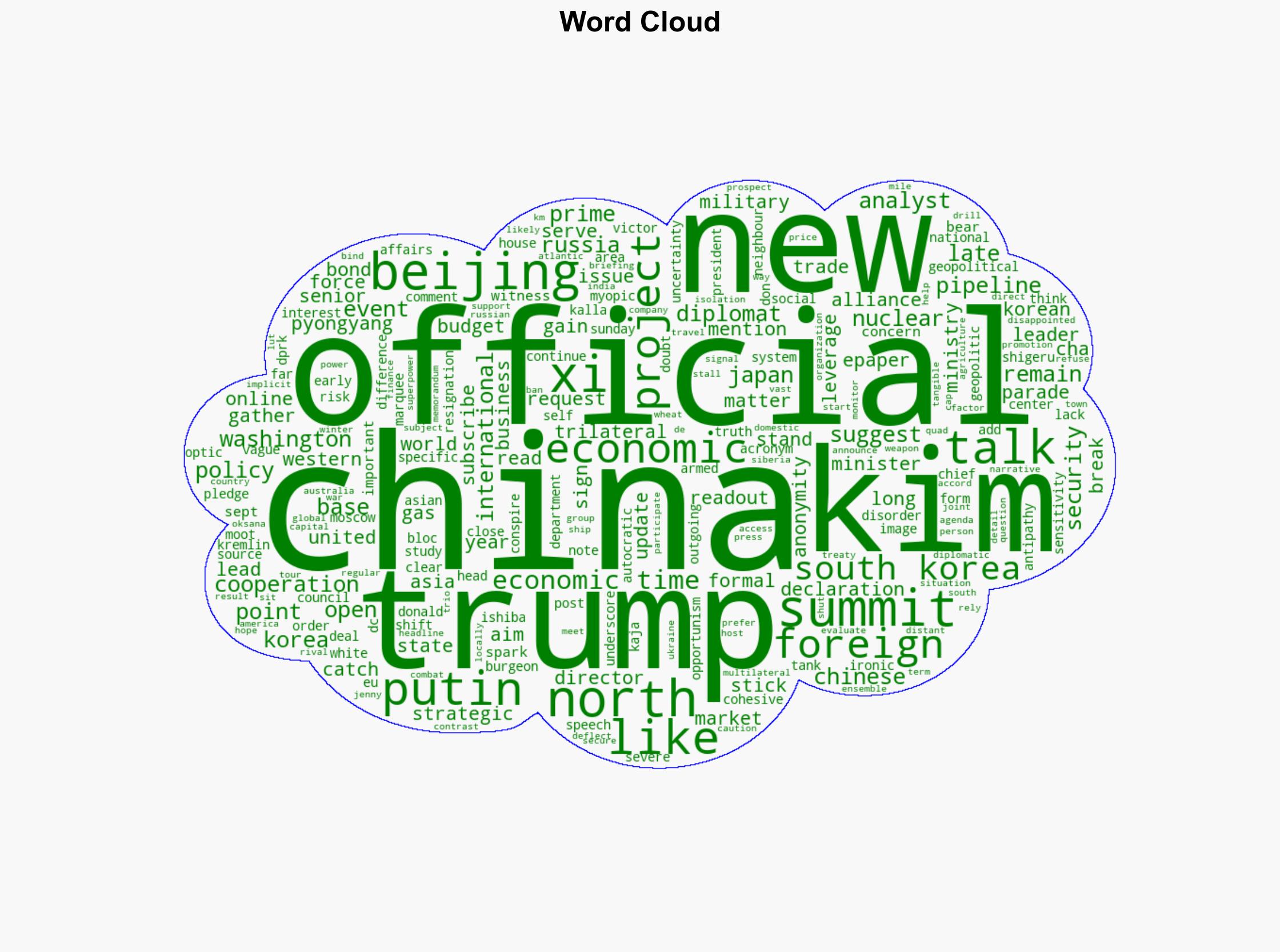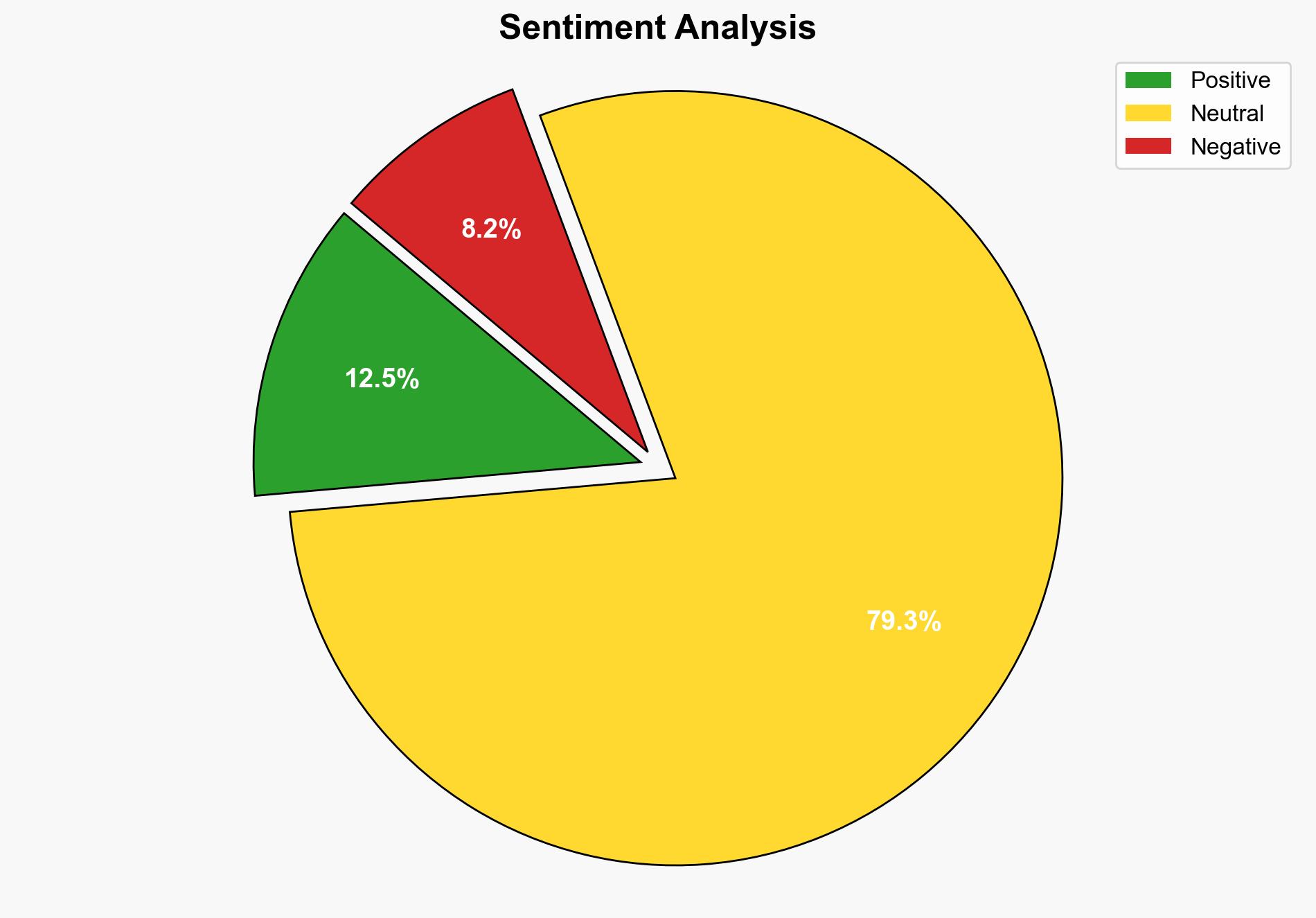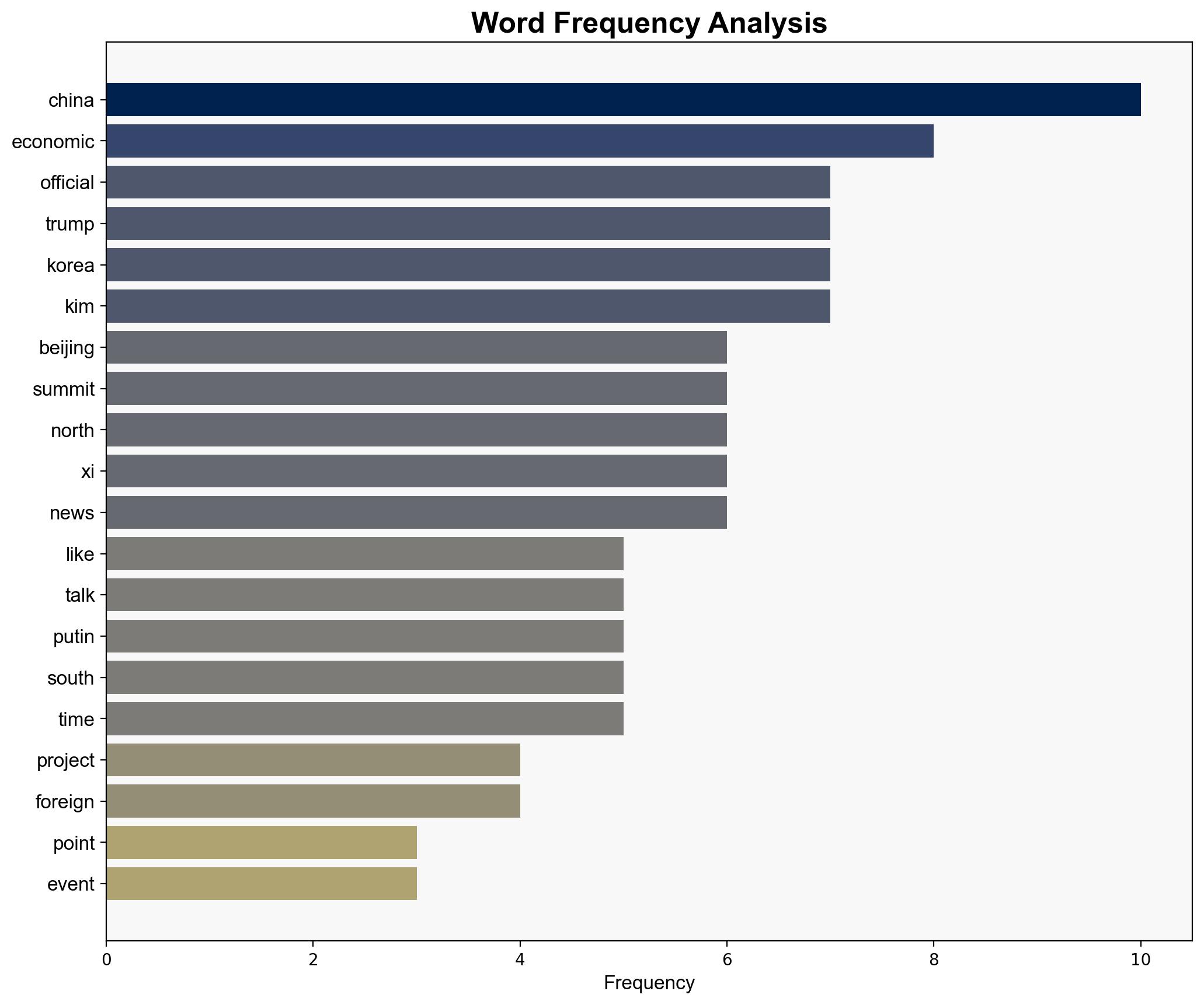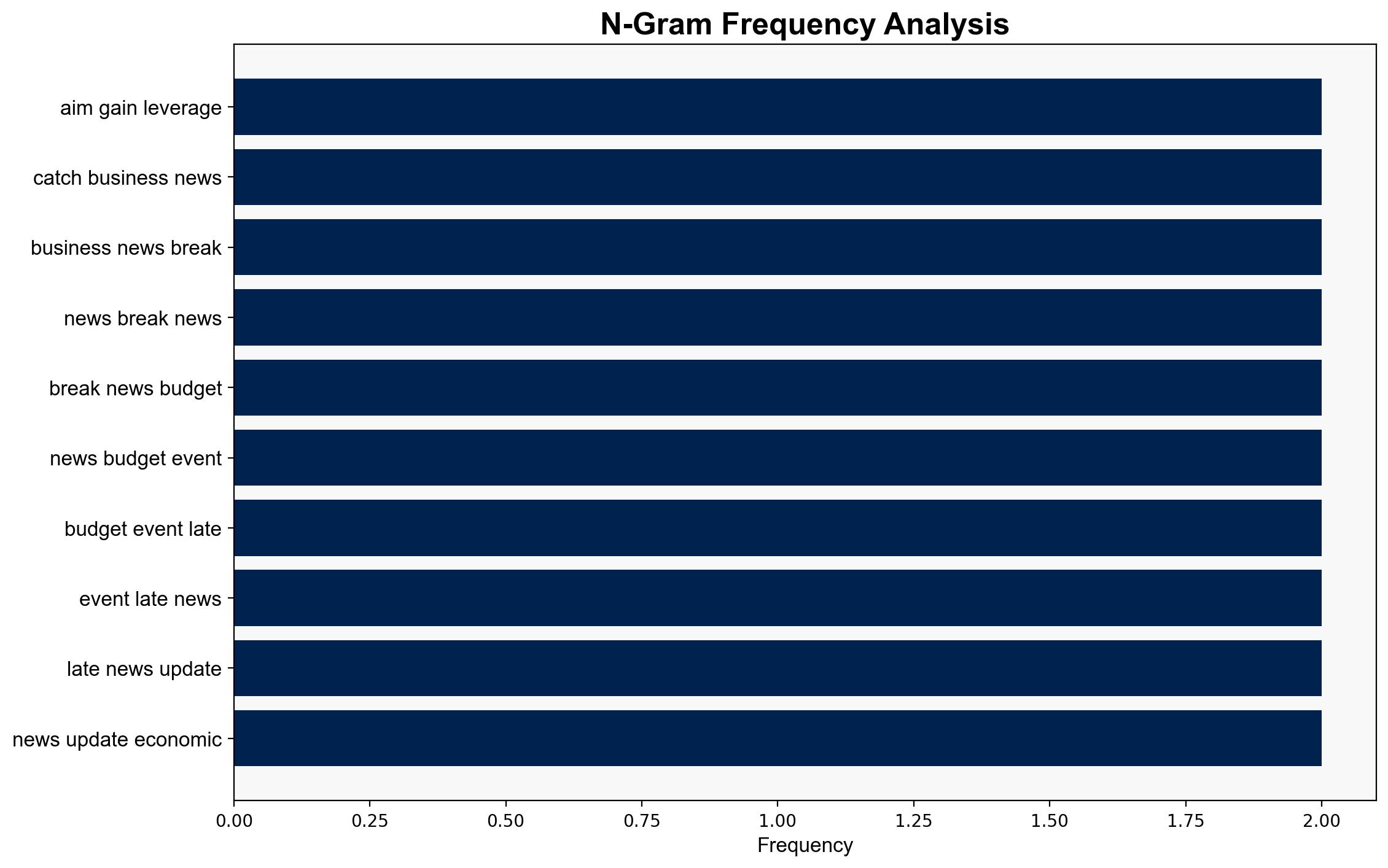How united is the ‘autocratic alliance’ challenging the West – The Times of India
Published on: 2025-09-10
Intelligence Report: How united is the ‘autocratic alliance’ challenging the West – The Times of India
1. BLUF (Bottom Line Up Front)
The ‘autocratic alliance’ consisting of China, Russia, and North Korea appears to be more of a loose coalition driven by opportunistic self-interest rather than a cohesive bloc. The most supported hypothesis is that these nations are united in their antipathy towards the Western-led international system but are limited by divergent national interests and strategic priorities. Confidence level: Moderate. Recommended action: Strengthen diplomatic engagement and alliances with regional partners to counterbalance potential threats.
2. Competing Hypotheses
Hypothesis 1: The autocratic alliance is a cohesive bloc with a strategic plan to challenge Western influence. This hypothesis suggests that despite the lack of formal summits and economic agreements, the nations are coordinating their efforts to undermine Western alliances and institutions.
Hypothesis 2: The alliance is a loose coalition driven by opportunistic self-interest rather than a unified strategic agenda. This hypothesis posits that while the nations share a common antipathy towards the West, their cooperation is limited by divergent interests and priorities.
Using ACH 2.0, Hypothesis 2 is better supported due to the lack of formalized agreements and the presence of unresolved economic and strategic issues among the nations.
3. Key Assumptions and Red Flags
Assumptions:
– The nations involved prioritize their national interests over collective goals.
– Economic and military cooperation is not indicative of a formal alliance.
Red Flags:
– Lack of official trilateral summits and concrete economic deals.
– Vague pledges of cooperation without substantive follow-through.
Blind Spots:
– Potential undisclosed agreements or backchannel communications.
– Internal political dynamics within each nation that may affect alliance cohesion.
4. Implications and Strategic Risks
The loose nature of the alliance suggests limited immediate threat of coordinated action against the West. However, individual actions by these nations could still pose significant risks, such as cyber-attacks, economic coercion, or regional military provocations. The lack of cohesion may also lead to unpredictable actions driven by internal political pressures.
5. Recommendations and Outlook
- Enhance intelligence-sharing and coordination with allies to monitor developments within the alliance.
- Engage in proactive diplomacy to address regional security concerns and counterbalance potential threats.
- Scenario-based projections:
- Best Case: The alliance remains fragmented, with limited coordinated action.
- Worst Case: A crisis prompts temporary unity, leading to coordinated aggressive actions.
- Most Likely: Continued opportunistic cooperation with sporadic tensions.
6. Key Individuals and Entities
– Xi Jinping
– Vladimir Putin
– Kim Jong-un
– Donald Trump
– Victor Cha
– Shigeru Ishiba
– Kaja Kalla
– Jenny Town
7. Thematic Tags
national security threats, regional focus, geopolitical strategy, international relations





